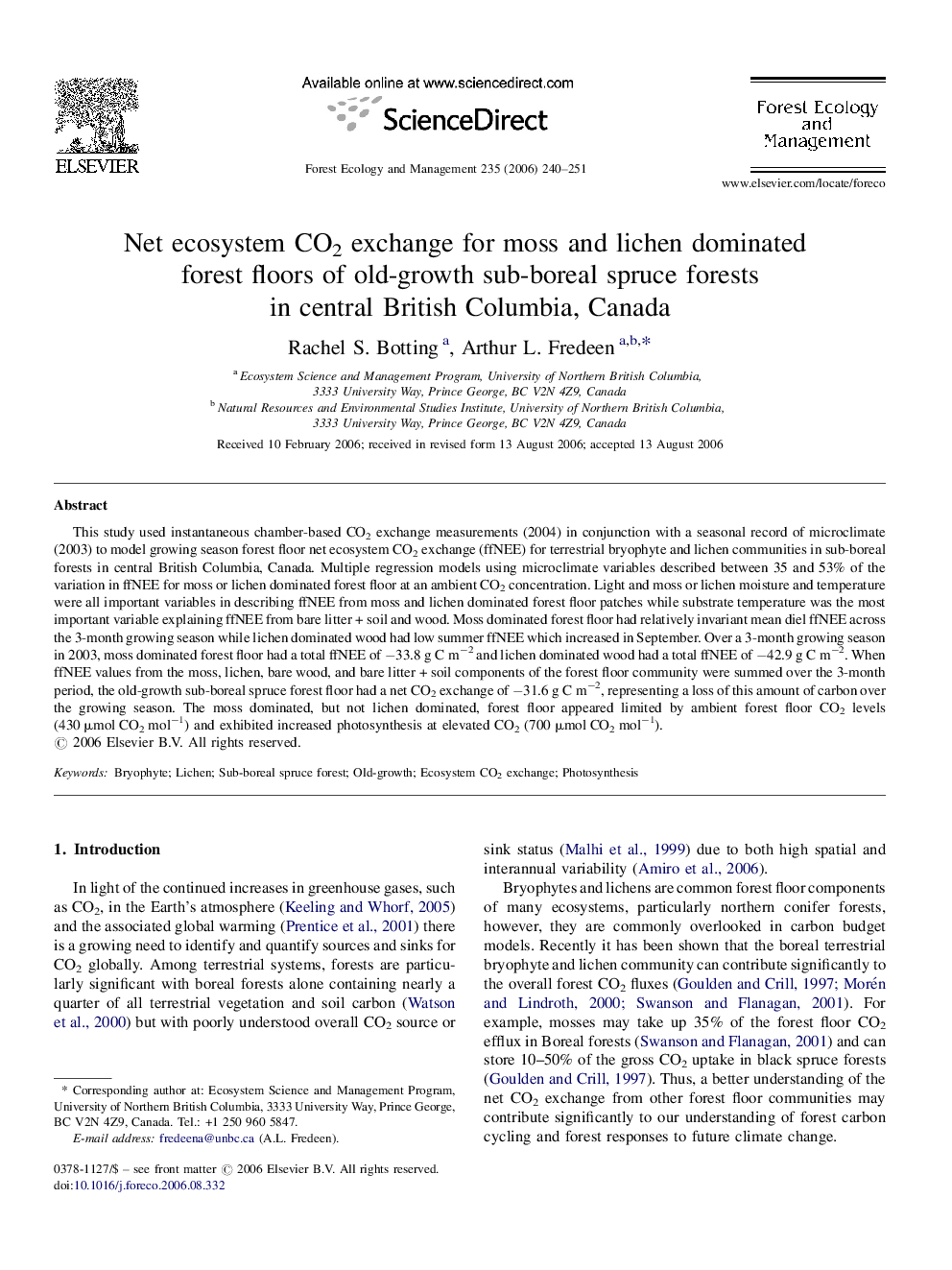| Article ID | Journal | Published Year | Pages | File Type |
|---|---|---|---|---|
| 90142 | Forest Ecology and Management | 2006 | 12 Pages |
This study used instantaneous chamber-based CO2 exchange measurements (2004) in conjunction with a seasonal record of microclimate (2003) to model growing season forest floor net ecosystem CO2 exchange (ffNEE) for terrestrial bryophyte and lichen communities in sub-boreal forests in central British Columbia, Canada. Multiple regression models using microclimate variables described between 35 and 53% of the variation in ffNEE for moss or lichen dominated forest floor at an ambient CO2 concentration. Light and moss or lichen moisture and temperature were all important variables in describing ffNEE from moss and lichen dominated forest floor patches while substrate temperature was the most important variable explaining ffNEE from bare litter + soil and wood. Moss dominated forest floor had relatively invariant mean diel ffNEE across the 3-month growing season while lichen dominated wood had low summer ffNEE which increased in September. Over a 3-month growing season in 2003, moss dominated forest floor had a total ffNEE of −33.8 g C m−2 and lichen dominated wood had a total ffNEE of −42.9 g C m−2. When ffNEE values from the moss, lichen, bare wood, and bare litter + soil components of the forest floor community were summed over the 3-month period, the old-growth sub-boreal spruce forest floor had a net CO2 exchange of −31.6 g C m−2, representing a loss of this amount of carbon over the growing season. The moss dominated, but not lichen dominated, forest floor appeared limited by ambient forest floor CO2 levels (430 μmol CO2 mol−1) and exhibited increased photosynthesis at elevated CO2 (700 μmol CO2 mol−1).
